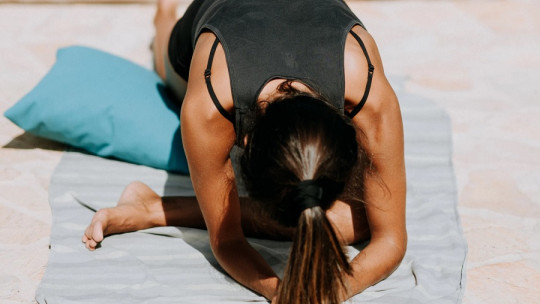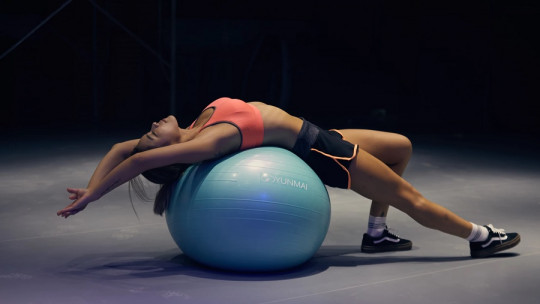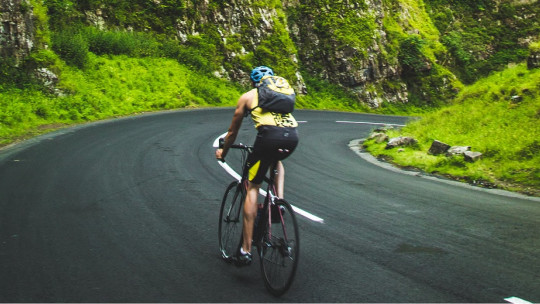Nowadays many people go to the gym or do sports at home or outdoors in order to exercise, maintain their physical and mental health, generate endorphins and maintain and improve their figure. There are a large number of possible exercises to perform, both aerobic and anaerobic.
One of the areas that is most often worked on is the abdomen, a part of the body that is generally acted upon by performing sit-ups. However, in recent years a different way of doing this type of exercise has become popular: which consists of doing hypopressive abdominals Below we will see what they are and what their benefits are.
Abdomen and abs
The abdomen is the part of the body located in the lower half of the trunk, located between the torso (from which it is separated internally by the diaphragm) and the pelvis. Inside, most of the organs linked to the digestive system and part of the genitourinary system are housed.
Regarding the muscles, we can find a series of muscles that provide mobility to the area while protecting internal organs and helping them function properly. These muscles are arranged laterally, posteriorly and anteriorly, and can be classified as transverse, oblique, pyramidal and straight.
The functioning of these muscles is of great importance, and when they are trained they allow better posture and the ability to move and function different parts of the body. Thus, training them can be a great advantage, and for this purpose it is very useful to carry out tension and distension exercises which has traditionally been done by performing sit-ups, which normally require tension through constant and repetitive movements.
However, hypopressive abdominals are not based so much on performing movements but on their tension and distension in a more passive way.
Hypopressive abs: general functioning
Hypopressive abs They are a type of exercise dedicated to the work of what is known as the abdominal belt from the tension and distension of the deepest muscles.
Yes ok breathing control It is essential in most physical activities and exercises, in hypopressive abdominals it takes on even greater significance because they are mostly exercises performed during moments of respiratory apnea.
It is about achieving negative pressure in our abdomen and part of the pelvis, so that the reflex reaction of the interior muscles occurs. The oblique and transverse muscles are especially worked
How is this exercise performed?
To perform them, posture and breathing control are combined. Basically, apnea or cessation of breathing is caused after stretching the diaphragm in a position that favors self-stretching and opening the rib cage while inhaling to try to keep it open when you exhale.
After exhaling and before inhaling, apnea is performed (that is, you spend a few seconds without breathing), observing a kind of suction in the abdomen. In short, it is about expelling all the air and then holding your breath while the chest expands and the belly shrinks, to maintain tension and finally stop tensing and breathe in again. It is recommended to do several series regularly to see results (approximately twenty minutes a day).
These types of exercises were developed from the observation of the possible difficulties or negative consequences of performing traditional abdominal exercises. However, it is necessary to have a certain control when doing them since they can generate some mechanical problems if they are done poorly and in an uncontrolled manner.
Benefits and contraindications
Hypopressive abdominals have a series of benefits compared to their traditional counterpart. On the one hand, it helps reduce the contour and perimeter by especially working the transverse and oblique muscles.
Hypopressive abs too They have been proven useful for pelvic area work , which can help prevent incontinence problems and even strengthen muscles after childbirth. Likewise, this strengthening can help reduce the effects of various types of sexual dysfunctions.
Another advantage is that in general the spine is not forced so they do not usually cause discomfort or back pain and, at the same time, possible major injuries are avoided.
However, This exercise can be dangerous for some people Specifically, people with hypertension should refrain from doing this type of exercise as it is based on the use of apnea. It is also contraindicated for pregnant women, although some programs dedicated to this type of population are beginning to be carried out.
People with anxiety and/or respiratory and cardiac problems could also have difficulties carrying them out, and they may also be contraindicated or require modifications and adaptations.
Some hypopressive exercises
Below you can find three hypopressive exercises that can help strengthen your abs.
1. Standing hypopressive crunches
To perform this exercise we must be upright, with our feet parallel and try to separate the shoulders while stretching the spine upward as much as possible. The arms can be placed in the shape of a jug or aligning the elbows with the hands and shoulders in a circle, forward.
Once in this position we inhale opening the ribs and try to maintain said opening while exhaling Once the air has been expelled, we perform the apnea with the ribs open and hold for a few seconds. Subsequently, we release and take another breath, taking several normal inhalations before performing the exercise again.
Another variant is performed flexed, resting the hands on the legs but also elongating the spine as much as possible.
2. Sitting hypopressive abdominals
As in the previous case, the spine is stretched as much as possible, although remains seated with legs bent The posture is similar to that used in numerous yoga and meditation exercises. The arms can be positioned in the same way as above, and the same breathing routine is performed.
3. Bottom crunches (plank)
This exercise is performed by resting the forearms and the tips of the feet on the floor, keeping the rest of the body in suspension and maintaining tension in the abdomen. The posture is similar to what is done when doing push-ups In addition to the obliques and the transverse, the rectus muscle is also worked.









